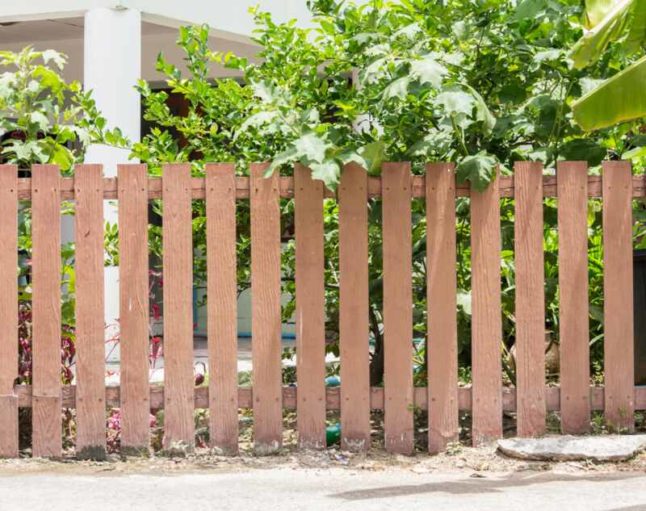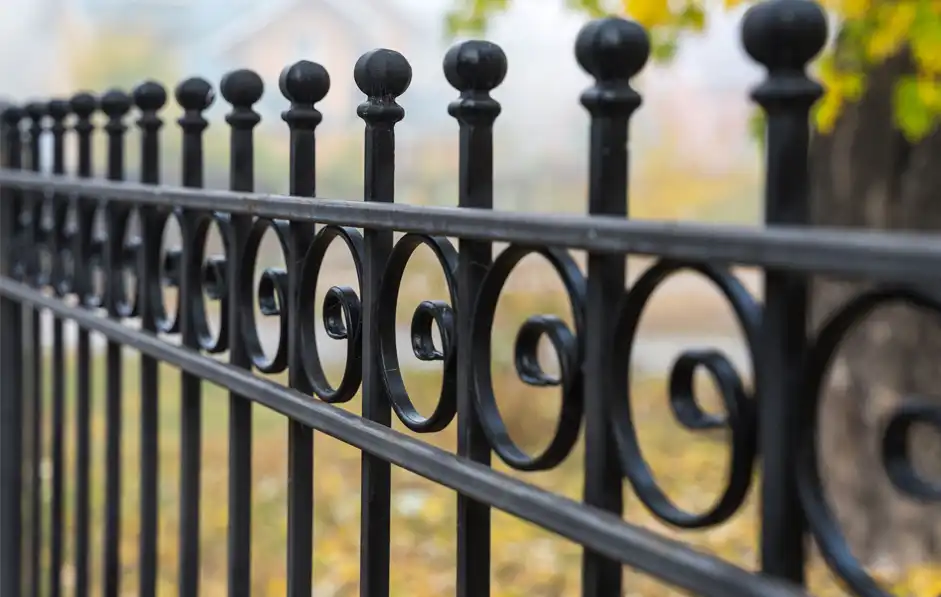All Categories
Featured
While regular upkeep can prolong the life of a fence, there are specific indicators that suggest it's time to change it. Below are the most typical indications that your fence might need to be changed.
Additionally, any type of splits, splits, or holes in the fencing ought to be addressed. A considerable amount of damaged slats, especially if the fencing is wooden, can lower both the sturdiness and look of the framework. While little splits might be repairable, large areas of the fencing might need to be changed totally.
If rot has actually infected a substantial part of the fence, repair services could just be a short-term solution. In such cases, changing the damaged parts or the whole fence may be necessary to stay clear of additional degeneration and to ensure the safety and stability of the structure.
![]()
If the pest damage prevails, repair work may not be enough, and replacing the affected fence components may be the most effective choice. Fencings made from materials like plastic or metal may be less vulnerable to insects, yet wood is usually one of the most susceptible.
For instance, wooden fences may start to warp, splinter, or split, while metal fencings may begin to corrosion or corrode. Plastic fencings can discolor or develop fractures gradually. Replacing it can aid maintain your residential property's safety and look. if your fencing is maturing and showing numerous signs of wear.
A brand-new fence will certainly supply greater sturdiness and reduce the need for recurring repair work. And also, it will certainly improve the total appearance of your residential or commercial property, which can raise its aesthetic charm and worth.
While minor rust spots can be treated and fixed, considerable deterioration that jeopardizes the stability of the fencing is a clear indicator that it requires to be changed. If the corrosion has caused holes or weakened key sections, replacing the steel fence will certainly stop further damages and provide a safer, much more safe obstacle.
Newer fence styles and materials are available that offer better toughness, enhanced safety and security features, and a fresh appearance. A brand-new fencing can significantly boost the general appearance of your residential property and raise its worth.
Changing your fencing with a design that fits your brand-new requirements will aid make sure that it offers the functionality and defense you anticipate.
![]()
Conclusion. A fencing is a crucial investment in the safety and security and appearance of your residential or commercial property. Over time, wear and tear are inescapable. If you observe indications such as structural damage, rot, parasite problems, or rust, it might be time to consider a replacement. Normal inspection and maintenance can help extend the life of your fencing, however inevitably, replacing it when essential will certainly ensure that your property continues to be protected, exclusive, and visually appealing for several years ahead.
- Architectural Damage. The key function of a fence is to offer protection and privacy, and any type of structural damages can endanger this purpose. Try to find signs of drooping, leaning, or busted fencing blog posts. A leaning fencing typically suggests that the messages have come to be unstable, whether due to moving soil, rot, or inadequate installment. It might be time for a substitute. if the leaning is widespread or impacts multiple areas.
Additionally, any type of splits, splits, or holes in the fencing ought to be addressed. A considerable amount of damaged slats, especially if the fencing is wooden, can lower both the sturdiness and look of the framework. While little splits might be repairable, large areas of the fencing might need to be changed totally.
- Decomposing or Degeneration (For Wooden Fences) Wood fences are especially prone to dampness, which can bring about decomposing gradually. If you discover spongy or soft areas in the wood, or if you can see visible mold or fungus, this suggests substantial degeneration. Decaying is particularly common near the base of the fence blog posts, where the timber is in contact with the ground.
If rot has actually infected a substantial part of the fence, repair services could just be a short-term solution. In such cases, changing the damaged parts or the whole fence may be necessary to stay clear of additional degeneration and to ensure the safety and stability of the structure.
- Bug Damages. Insects, such as termites, carpenter ants, and rats, can damage wooden fences. Termites, in certain, can create substantial damage by tunneling with the wood, making the framework unpredictable and weak. If you see indicators of a pest infestation, such as little holes, sawdust piles, or the visibility of bugs, it's critical to act quickly.

If the pest damage prevails, repair work may not be enough, and replacing the affected fence components may be the most effective choice. Fencings made from materials like plastic or metal may be less vulnerable to insects, yet wood is usually one of the most susceptible.
- Age of the Fencing. The age of a fence plays a considerable function in its problem. A fencing's life expectancy commonly varies from 10 to two decades, depending upon the materials and the quantity of maintenance it gets. If your fencing is nearing the end of its expected life expectancy and has actually begun to show substantial signs of wear, it may be time for a substitute.
For instance, wooden fences may start to warp, splinter, or split, while metal fencings may begin to corrosion or corrode. Plastic fencings can discolor or develop fractures gradually. Replacing it can aid maintain your residential property's safety and look. if your fencing is maturing and showing numerous signs of wear.
- Trouble in Maintenance. It may be an indication that the fence is no longer in excellent condition if you locate on your own frequently making repair work to your fence. Continuously fixing the exact same issues, such as changing broken slats, filling holes, or patching up cracks, can be costly and taxing. Rather of remaining to restore an aging fence, it may be much more affordable in the long run to replace it altogether.
A brand-new fence will certainly supply greater sturdiness and reduce the need for recurring repair work. And also, it will certainly improve the total appearance of your residential or commercial property, which can raise its aesthetic charm and worth.
- Rust and Corrosion (For Metal Fencings) Metal fences, including chain-link, functioned iron, and light weight aluminum, are at risk to corrosion and corrosion, particularly in areas with high wetness or direct exposure to salt. Corrosion can gnaw at the material, weakening the framework and leading to safety worries.
While minor rust spots can be treated and fixed, considerable deterioration that jeopardizes the stability of the fencing is a clear indicator that it requires to be changed. If the corrosion has caused holes or weakened key sections, replacing the steel fence will certainly stop further damages and provide a safer, much more safe obstacle.
- Outdated or Unattractive Appearance. In some cases, the need for a new fence is less regarding capability and more concerning aesthetics. Gradually, fencings can end up being weathered, discolored, or just obsoleted. If your fence no more complements your building or fulfills your demands-- whether for security, privacy, or curb allure-- it might be time for a substitute.
Newer fence styles and materials are available that offer better toughness, enhanced safety and security features, and a fresh appearance. A brand-new fencing can significantly boost the general appearance of your residential property and raise its worth.
- Fencing No More Serves Its Function. Fencings are typically installed with a specific objective in mind, such as keeping pet dogs in, giving privacy, or improving protection. If your needs change, such as wanting even more privacy or better defense for family pets or children, it may be time to replace the fence with one that better offers your existing requirements.
Changing your fencing with a design that fits your brand-new requirements will aid make sure that it offers the functionality and defense you anticipate.

Conclusion. A fencing is a crucial investment in the safety and security and appearance of your residential or commercial property. Over time, wear and tear are inescapable. If you observe indications such as structural damage, rot, parasite problems, or rust, it might be time to consider a replacement. Normal inspection and maintenance can help extend the life of your fencing, however inevitably, replacing it when essential will certainly ensure that your property continues to be protected, exclusive, and visually appealing for several years ahead.
Latest Posts
Affordable Deluxe: Discover the Conveniences of Laminate Floor Covering
Published Apr 20, 25
1 min read
Get Your Car Fixed Fast - Book an Appointment with Montclare Auto Repair Hassle-Free
Published Apr 20, 25
2 min read
Streamline Your Funds with WyHy's Coinstar Service
Published Apr 20, 25
1 min read
More
Latest Posts
Affordable Deluxe: Discover the Conveniences of Laminate Floor Covering
Published Apr 20, 25
1 min read
Get Your Car Fixed Fast - Book an Appointment with Montclare Auto Repair Hassle-Free
Published Apr 20, 25
2 min read
Streamline Your Funds with WyHy's Coinstar Service
Published Apr 20, 25
1 min read